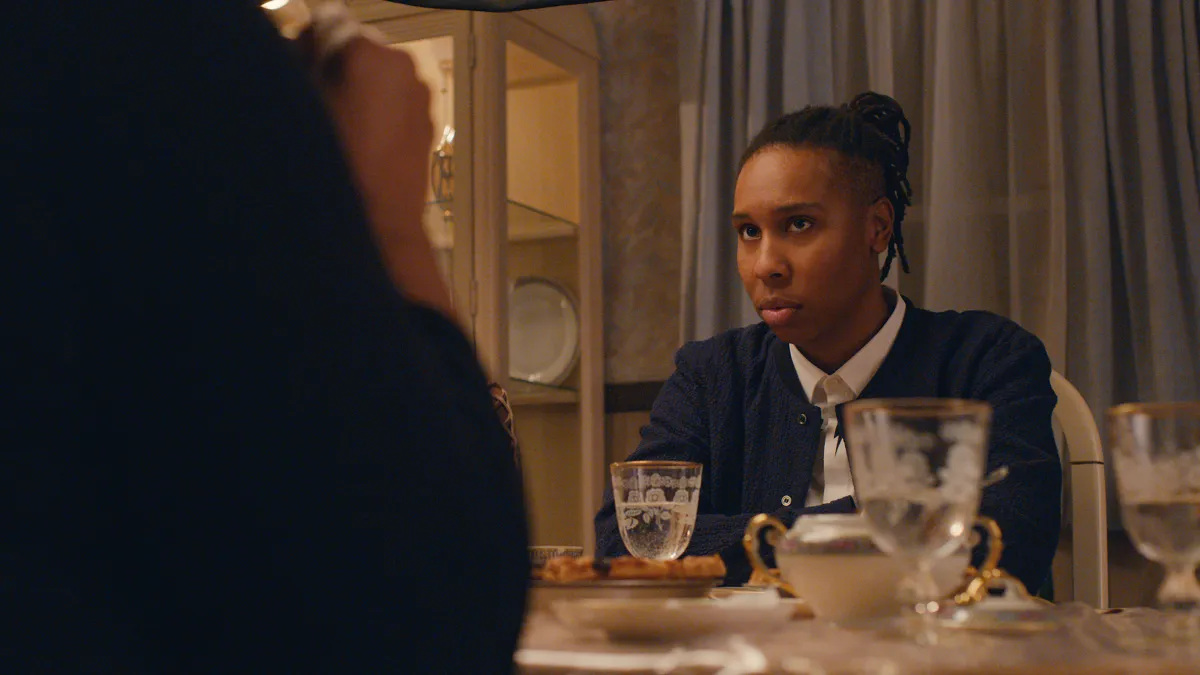Just got final confirmation of our panelists for tomorrow's @glaad panels at #TCA17 and I'm giddy over how top notch they are. pic.twitter.com/9W3qUljiGH
— Amber Dowling (@amber_dowling) August 3, 2017
At the Television Critics Association press tour yesterday, GLAAD hosted two panels to discuss the state of LGBTQ+ representation in television today. I don’t think you’ll be surprised to hear that there’s still a lot of work to be done.
The LGB panel featured Lena Waithe (Master Of None), Stephanie Beatriz (Brooklyn Nine-Nine, Danger & Eggs), Wilson Cruz (My So-Called Life, 13 Reasons Why), Emily Andras (Wynonna Earp’s executive producer), and Pete Nowalk (How To Get Away With Murder creator/EP), as well as GLAAD’s Director of Entertainment Research & Analysis Megan Townsend and GLAAD’s VP Zeke Stokes.
The group gathered to discuss where we are in terms of representation, and where we need to be heading. According to GLAAD’s research, there are 278 regular and recurring LGBTQ characters on TV. 71 of those are on broadcast television; cable has nearly double that with 142, and streaming platforms have 65. The majority of those are gay white men.
But those 278 characters are still subjected to the same long-standing, damaging tropes.
To start, the “bury your gays” trope (killing off LGBTQ characters) is still going strong. Over the last two years, 62 gay and bi women television characters were killed off of their shows.
GLAAD says 50+ dead queer women since 2015 in TV #BuryYourGays #RepresentationMatters #TCA17
— Natalie Abrams (@NatalieAbrams) August 4, 2017
Additionally, those characters are often portrayed as stereotypes, either as the butt of a joke or as villains.
Bisexual women onscreen far outnumber men (64 vs. 19), and they often suffer from negative portrayals. #TCA17 #RepresentationMatters
— With An Accent (@withanaccent) August 4, 2017
Out of TV's 83 bisexual characters, 64 are women, while the men often are trope-ily portrayed as wicked/calculating. #TCA1 #GLAAD
— Matt Mitovich (@MattMitovich) August 4, 2017
Representation is meaningless if the only queer characters we see are stereotypes. These portrayals are destructive, both for those looking for characters to relate to, as well as straight audiences who are having these stereotypes driven even further into their subconscious.
#WynonnaEarp's @emtothea re Bury Your Gays trope: "A lot of kids are seeing themselves getting killed… that can do damage." #TCA17 #GLAAD
— Matt Mitovich (@MattMitovich) August 4, 2017
Trans rep in media is important because only 16% of Americans know someone who is transgender. #TCA17 #RepresentationMatters
— With An Accent (@withanaccent) August 4, 2017
.@iamStephBeatz says TV basically teaches bi kids they need to fit into a "hyper-villainized, sex machine" mold. #TCA17 #GLAAD
— Matt Mitovich (@MattMitovich) August 4, 2017
“The more that we develop these characters, the more that these kids can see
themselves.” @iamstephbeatz on positive LGBTQ characters #TCA17— GLAAD (@glaad) August 4, 2017
(A quick aside: Stephanie Beatriz apparently has a tattoo of a Danger & Eggs character on her arm. There has to be a picture of this somewhere, right? Please?)
Emily Andras laid out the job of those producing these shows. “We need to be more aware of these tropes — especially the ‘bury your gays’ trope. We, as writers, should challenge ourselves to write more interesting and complex queer characters.”
.@Glaad wants a day when a trans character is a lead role and NOT all about being trans. #RepresentationMatters #Glaad #TCA17
— Damian Holbrook (@damianXITED) August 4, 2017
.@glaad to TV writers: Make LGBTQ characters who1) don't die 2) aren't ensemble 3) aren't stereotypical leads. #TCA17 #RepresentationMatters
— Whitney Friedlander (@loislane79) August 4, 2017
Lena Waithe says she wants to do just that. “I always want to write stories about queer people of color because I’m familiar with stories where queer people of color are the center. I am trying to make that happen, but I need the business to work with me.”
She points to the “Thanksgiving” episode of Master of None, which she wrote. (And for which she became the first black woman nominated for an Emmy in comedy writing–a first she didn’t even know she was claiming until this panel.) She said that stand-out episode is “so black and so gay,” but she still gets straight white guys telling her it’s their favorite episode.
“That’s when I know I’m doing my job–when anybody can relate,” she says. “It speaks to where we are. We are making progress, but we still have a lot of work to do.”
(via Deadline, featured image: Netflix)
Want more stories like this? Become a subscriber and support the site!
—The Mary Sue has a strict comment policy that forbids, but is not limited to, personal insults toward anyone, hate speech, and trolling.—










Published: Aug 5, 2017 12:47 pm